CRN Exclusive: Scale Computing CEO On Attacking VMware's Virtualization Licensing Model And In The Process Saving Customers $32M

The Red-Hot Hyper-Converged Market
Jeff Ready, the CEO of Scale Computing, the hyper-converged, virtualization appliance maker which just launched its first broad-based, multi-tiered channel program, spoke with CRN about the company's relentless drive to get customers to dump VMware, the astronomical savings in VMware licensing fees that Scale has delivered to customers and the stark differences between Scale and competitors SimpliVity and Nutanix.
Ready, a serial entrepreneur, has over the last two decades started a number of companies that reduce the complexity and cost of computing including Corvigo, an anti-spam filtering company, and Scale, which was built from the ground up as a hyper-converged, virtualization game-changer for small and midsize customers.
Under Ready's leadership, Scale sales more than doubled over the last year with more than 1,500 customers now running the company's HC3 appliances which integrate storage, server and virtualization under its patented HyperCore Software platform.

Was the concept from day one to create a VMware killer?
Our intent was to put them out of business. We called it barracuding VMware. We felt VMware was complicated and expensive. From the very beginning we positioned ourselves as an alternative to VMware.
We used the term Barracuda as a verb. We wanted to Barracuda VMware. They were charging too much and we wanted to radically simplify virtualization.
Some big investors thought it was crazy that we were taking on VMware – which was the defacto standard. I said 'Well you have Apple Vs. Microsoft. You have Red Hat Vs. Microsoft. There are reasons why these other options exist. There are people who need them.'
Some investors said ' You'll never get anyone to do it. Then we got our first 100 customers. Then we got 1,000 customers. Now we have more than 1,500 customers. Companies are trying to move away from VMware.
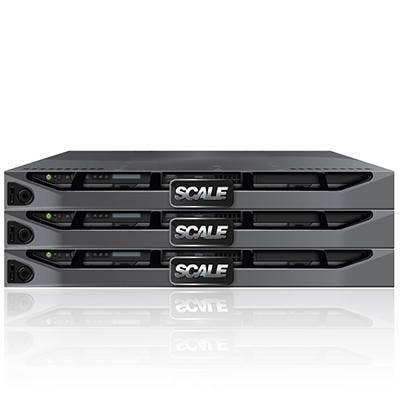
On the average sale how much are partners selling Scale's HC3 Appliances saving customers on VMware licensing fees?
On the average deal, $50,000 to $100,000. Using VMware's own calculator the capex cost of 50 virtual machines would be $143,000. That is a $25,000 system from us.
In the last year how many VMware licenses did you replace and at what cost savings to customers?
We shipped last year 1,600 appliances – a VMware license per appliance is like $20,000 a server for VMware Enterprise. That amounts to VMware licensing savings of $32 million. That is more than double from last year. We go into customers and show the TCO with the VMware calculator from the VMware website.
For a typical customer the savings is more than 50 percent and in some examples 68 percent. They don't believe us. They ask us – How is that possible?' I tell them 'VMware is ripping you off. That is what's happening.'

What is the customer reaction to the licensing cost savings?
VMware just doesn't understand the midmarket segment. There is a disconnect.
VMware sells Essentials Plus for $7,500 for three servers. However, the midmarket customer that buys Essentials Plus quickly finds out they didn't get the features they wanted and the only way to get those features is to jump up to the enterprise license. And when you go from three servers to four servers everything has to be licensed to VMware Enterprise even if it's a two-man IT shop.

What's the impact Scale has with regard to reducing VMware administrator overhead?
One of our customers is Safran Aerospace. They had five guys doing infrastructure – 100 percent dedicated to running infrastructure. So they went from five dedicated guys managing infrastructure at three locations to one person doing it in less than 15 minutes a day.
That is typical. As you get into these environments you get those man hours back. I am not aware of any customer that actually let people go because the list of things they want to get done is tremendous. I have had a lot of CIOs say you have allowed us to turn our IT admins into business analysts who are working on stuff to differentiate the company

How many customers are running both Scale and VMware?
We get customers that run both. I would love for customers on day one to deploy us and move everything over and throw VMware into the trash. But often times they'll try Scale with applications or servers that are up for renewal or haven't fully been moved over to VMware. Usually very quickly we advance from there. It is very different from most of the other guys in hyper-convergence where their beach head is often virtual desktops. We do VDI but that is not the typical use case for us. We are almost always primary server virtualization. And then often times we end up running everything. In those environments we displace a lot of other vendors. You are talking about whoever the server vendor is, the SAN vendor as well as VMware.

What is the business impact Scale is having in the market?
It is not that often that a director of IT can go to a CFO and say: 'We are going to buy this and the reason we are buying it is it is 50 percent savings over what we have today.' Usually it is the other way around.
It is not necessarily cheaper to move to the cloud. It is often more expensive than running things locally. Usually buying a Scale solution which will run for years on end is about six months of running your workloads on the cloud.
How is that changing the VMware vs. Scale cost and complexity landscape?
At the end of the day customers get more done than they were expecting. The partners actually make more money because they are providing services in addition to straight up infrastructure and we steal a customer from VMware. Ultimately that is what we have been doing for the last four and a half years with our product - taking customers from VMware.

How much do you think you are saving customers in VMware administrators that can be re-deployed to focus on mission critical costs?
When we do surveys the average response to that question is we just saved them 80 percent of their admin's time and some customers say 90 plus percent. I am not exaggerating.
I was just talking to a customer – a classic VMware customer- Tube Processing Corporation. They are a manufacturing company. They have two Scale clusters – a primary and a disaster recovery set up. They have about 200 VMs (virtual machines). I was just talking to their director of IT. He was telling me that it is night and day compared to VMware. I asked him how often are you actually in the user interface – almost never. I said how did that compare to your VMware experience. With VMware he had it open on his desktop always. His primary focus was making sure everything was running with VMware.
It is not uncommon for our customers to call into support because they forgot their password. How many VMware administrators don't remember their password? They log in 75 times a day.
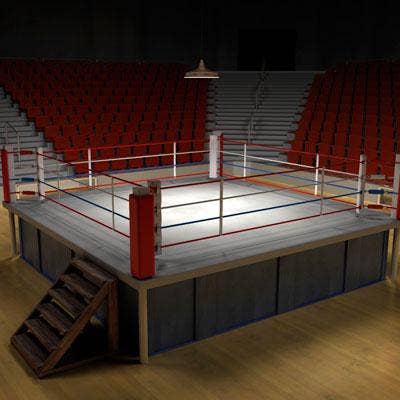
What is the difference between the VMware model and the Scale model?
A good analogy for the end user is having a PC versus a Mac. The Mac user experience is completely different. The Mac OS sort of takes care of a lot of things. You are not installing drivers that stereotypically you do with Windows.
The user experience for our product – doing IT infrastructure – is like the first time you opened up an iPhone. There is no instruction manual. There is no training. There is a video on our site done by a third party that proves you can actually go from unboxing the gear to deploying an Exchange server in 20 minutes from start to finish. VMware deployments are weeks long, months long projects. The partners that are successful with us realize they don't have to make a bunch of money on services around installation. To the customer that is a feel bad expense- 'This thing was so complicated that I brought in a partner to install it.' That is not providing real long term value back to that end customer.

What are the manpower savings vs SimpliVity and Nutanix?
If you deploy SimpliVity and Nutanix you don't get rid of your VMware administrator. He is the one actually managing that system. You may get rid of a storage admin. The VMware team is still the VMware team. We completely change that dynamic. There is no VMware team. There is really no Scale team either because you spend so little time managing the system. It just takes care of itself.

How does Scale views hyperconvergence vs. Nutanix and SimpliVity?
What we are bringing to the table is a whole bunch of technology that was built from the ground up to simplify the data center with really an eye toward what we call small to midsize IT. Specifically what we are talking about is a location where you have between zero and five IT people per site. It is a perfect fit for small company that has one site with one IT person or a large company with 20 sites with three people at each site. The entire user experience with the product is centered around that paradigm.
We assume a customer doesn't have a VMware expert on staff or a storage expert on staff. Most of our customers have IT generalists. The same person racking and stacking servers is the person who is cleaning viruses off of the bosses' computer and running the applications that make the business work.

What does the simplicity of the Scale Solution mean for customers particularly in the midmarket?
There was a customer talking to us, researching and agonizing over moving away from VMware. All of a sudden they called in a panic. They had a SAN that had crashed. They were down. So they bought the gear, we overnighted it to them and the next day they were back up and running and we were ingesting everything off the system. We saved that company. They were in dire straits.
We talk about virtualization and servers and storage, but at the end of the day the point is it is a platform that our customers run their applications on. It is as simple as that. The idea is they don't have to worry about the actual infrastructure.
We ship an appliance and we could sell software – there is nothing stopping us from taking our software and selling it independently- but part of the experience with the customer is: "Open the box. Plug in the appliance and you are good to go. It gets them out of that world of worrying about their infrastructure.
What kind of partner traction are you seeing?
Our channel partners want to make money on services. They provide real value to their customers. The channel has changed a lot in the last five years. The partners who are thriving are the ones who have transitioned from the equivalent of a car dealership marking up gear and selling it to providing services.

What is the difference between Nutanix, SimpliVity and other hyper-converged vendors?
With most of the Nutanix products and SimpliVity you are running VMware. It is a way of deploying infrastructure for VMware.
The way you interact with SimpliVity is it is a tab inside of VMware and you are managing a SAN except that it is a virtual SAN not a physical SAN.
In the case of Scale, there is first and foremost no VMware. So there is no licensing for VMware. There is no SAN – physical or virtual.
When a customer manages their Nutanix box they set up LUNs (logical unit numbers) and shares and all these kind of SAN things like you always did except instead of being a physical box – there isn't one. It is sort of mimicking that.
In the case of Scale that doesn't exist. There is no storage protocols. There is no storage management. That's because we built this product from the ground up so that all our storage technology exists independent of and outside of the hypervisor. That's a 180 degrees different than what everybody else is doing. Their storage technology actually lives inside of the hypervisor. We like to say we control the hypervisor- the hypervisor doesn't control us.
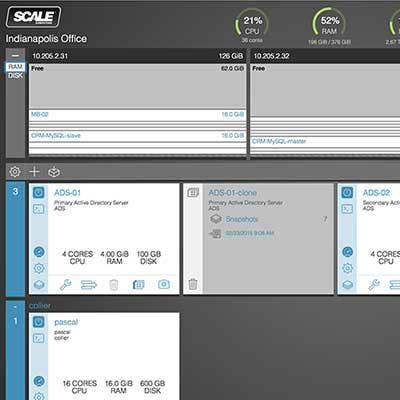
Talk about the importance of Scale's HyperCore technology.
Part of our technology which is largely invisible to the outside world is called HyperCore -- which is the operating system that makes it all work. It is the orchestration layer that takes all these disparate layers and the software components – the storage layer and the virtualization layer,..etc. and turns it into this virtual single server. So if you accidentally pull the power cord on one of the systems, everything fails over to other pieces of the cluster. That happens automatically – even if I am installing a VM for the first time and in the middle of that installation and I pull the power cord – it just fails over and keeps going.
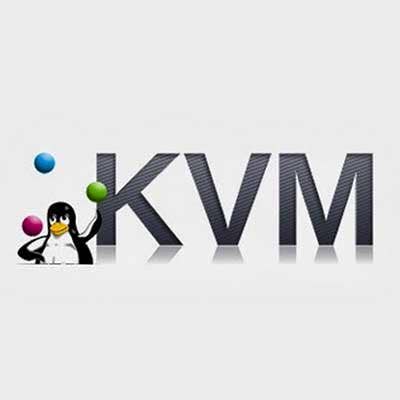
How big a decision was it to base the product on KVM?
We knew that to really drive home this concept of simplifying the infrastructure, we had to redo the way that storage worked. This concept of SANs and LUNs and shares and mapping all this stuff up through the chain wasn't going to work. You can't do that with VMware. VMware is a closed system. And so what Nutanix and SimpliVity and others did is, inside VMware is a virtual machine that is pretending to be a SAN. That's how those systems work. That's more complicated than where you started. We knew that we were going to do the storage completely differently -eliminating storage protocols.
In order to do that, we had to go outside of the hypervisor, and then be able to control the hypervisor. So that naturally led us to the open source option, basically Xen and KVM.
KVM had a distinct technical advantage in that it basically offloads all the heavy virtualization to the CPU itself, 'cause all this code is basically built into the Intel processors now. And so, [KVM] was faster, it was lightweight, and it was a natural fit.

What kind of impact is the Scale model having on partners?
The typical partner can save their customers 50 percent on VMware licensing. Then they sell them other services to make up that delta. So just think about the margin the partner gets on $50,000 of VMware licensing vs. $50,000 of services and what the partner gets. It's night and day. Look, your customers are going to be happier. You're going to make more money.

Scale's revenue doubled between 2015 and 2016. What is driving that sales growth?
There's two things happening simultaneously which are driving our growth. [Hyper-convergence] has moved from being an interesting way to do infrastructure to a standard.
Whether you're using VMware or not, that has become the trend. And so, because we eliminate the SAN, that's part of the growth. On top of that, you have this increasing amount of dissatisfaction with VMware generally because of the complexity and certainly the cost. There's the upfront cost, but the big pain is the on-going complexity. I have to have guys on staff to manage this thing, and so on. So people want to get away from that.
So we're riding the hyper-convergence wave generally, as well as the [idea that customers] have got to get away from the VMware complexity. So those two things together are really what's driving the growth.
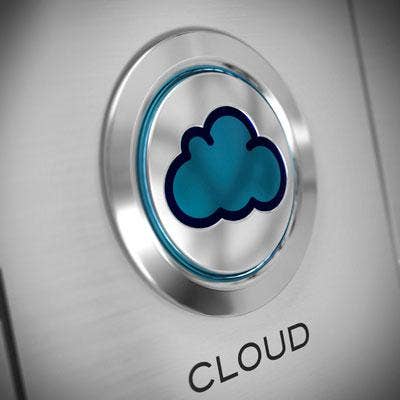
What impact is the cloud having on those market dynamics?
I know that there are partners out there who are afraid that the next time that phone rings it's going to be one of their key customers that says, "You know, it's been great working with you for the last 17 years, but we're moving everything to the cloud because this is way too damn complicated. And what's that partner going to do?
We can solve that problem. We can give the customer the simplicity they want and the cost savings that want, and allow the partner to maintain that customer relationship.
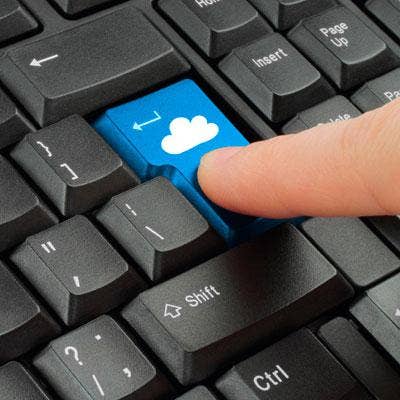
What are the dynamics you are seeing vs. public clouds?
[Public cloud adoption] means a lot of different things. The main use of public clouds has been and still is backup. I need somewhere to back up my data, I send it to the cloud. Arguably, that's really cloud-enabled. Storing data. It's like a tape drive in the sky.
The challenge with data in particular is that about 90 percent of the data that gets written only gets read twice. And about 90 percent of [the rest of the] data only gets read once. So you end up talking about 98 percent of your data is literally just sitting there. So if you are going to move all this stuff to the cloud, well, guess what? You are paying for data that nobody in the company is accessing, and you are paying for it over and over again. And yes, if the cost dynamic is, "Yes, I have to buy a new EMC SAN every five years," then it's cheaper to put the stuff on Amazon.

What is the return on investment and payback for Scale versus the public cloud?
If you buy the Scale system, in six months you're ahead of the game from where you would have been putting [data] on Amazon. Over five years you're way ahead. You're ten times ahead. It makes a huge difference. And it gives those customers far more flexibility.
They're going to have some applications that become websites, and run in the cloud. But legacy applications can be an overwhelming project for somebody to think, "OK, I'm just going to move it lock, stock, and barrel into the cloud." Often times it's not practical.

What kind of benefits do customers see with regard to disaster recovery with Scale?
We had a customer in the financial services business. They happen to be in Florida when the hurricane came through. They had Scale, and they were using the DR (disaster recovery) built in. When it was forecast two days in advance that this hurricane might hit, they're like, "Ah, let's just flip the switch." They moved everything over. And then for two days, they ran everything remotely. It worked fine. That hurricane ended up barely hitting before going back out to sea. No big deal. Flip the switch and everything came back over, and they didn't have to think about it.
That's sort of a life-changing thing for the IT guy. Right now, he's gone from, "This hurricane is the big giant disaster and is going to be a mess and I don't know what to do" to "I'll hit the button, and I'll hit the button again." It's like flipping a light switch. You don't have to think about it anymore, it's so easy.
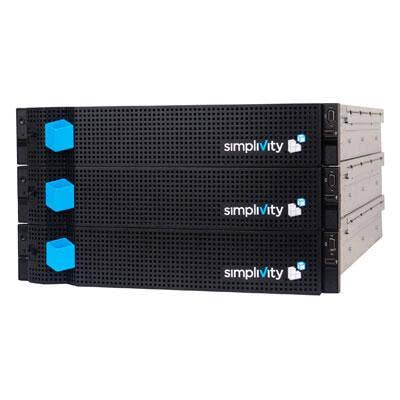
What is the cost benefit of Scale Computing over the SimpliVity-HPE offering?
Almost all those offerings in almost every case are going to have VMware. The VMware cost is still going to exist. So if we're saving you 30 to 50 to 80 percent on VMware, you're still going to have on other solutions.
And then, because of the way we're architected, we can often deploy systems that are physically smaller in their component CPU and RAM because our systems are much more efficient, and so you can run the equivalent workload on our system with less gear than what it would take to run those other systems. We typically would expect to be half the price or better initially compared to some of those other solutions.
Think of a credit union with 17 branches. They're not in a position to spend about $200,000 per branch to deploy hyper-convergence. We can send them a $10,000 box per branch and cover the entire organization for $170,000 in that case
We built the system with an eye on that SMB use case. We can deploy into very small environments that other people really can't.
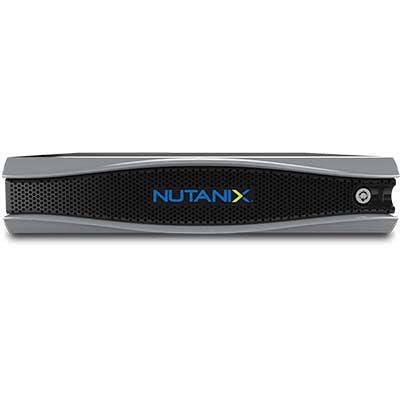
What's different between how Scale Computing's and Nutanix's solutions were designed?
Nutanix was designed to primarily eliminate the SAN. … They virtualized the SAN, and run VM (virtual machine) inside of VMware. The Acropolis product architecture is identical, except its running as a VM inside of KVM as opposed to VMware. That does not solve the problem of the complexity of managing the SAN. It's still a VSA, a virtual SAN appliance, that runs inside of VMware. And still there's a tremendous amount of overhead in just simply running that VM.
The future of storage technology is what's called "controller-less systems," with NVMe and 3D XPoint and new kinds of drives that do not use controllers, which we've used for decades. A VSA, by its architecture, is a storage controller. And so you lose the advantage of what's called multi-pathing through the CPU directly to the storage by having this controller in the way. That's part of the reason why we architected the system in the way we did. Yes, it means it's more efficient using us compared to today's standard technologies. But if you then go to this next generation of storage technology, it's clearly orders of magnitude more efficient.
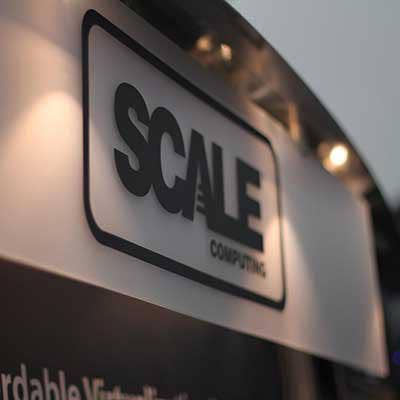
What's the fundamental difference between Scale Computing's design and what Nutanix and SimpliVity did?
At the very core, those guys built their products to eliminate SANs. We want to be an alternative to VMware. That's a completely different way of approaching the business.
What is the core philosophy at Scale Computing?
We have a phrase we use which is, 'best-ever.'What we mean by best-ever is, we want to be the best at everything that we touch. We want to be the best-ever vendor partner that the end user ever had, we want to be the best-ever channel partners our channel partners ever had, the best-ever support experience the customers have ever had. Philosophically we view the products that we sell at Scale as all of these things put together. It's not just the software and the silicon that we ship people, but it's the support and the pre-sales experience, it's everything. And I think most customers view it that way, too, even though most vendors think their product is the stuff they sell to get their P.O. (purchase order) for and then they move on, and go for industry-standard support, whatever that means. We want to give the customer an unbelievable experience that in every case exceeds their expectations.